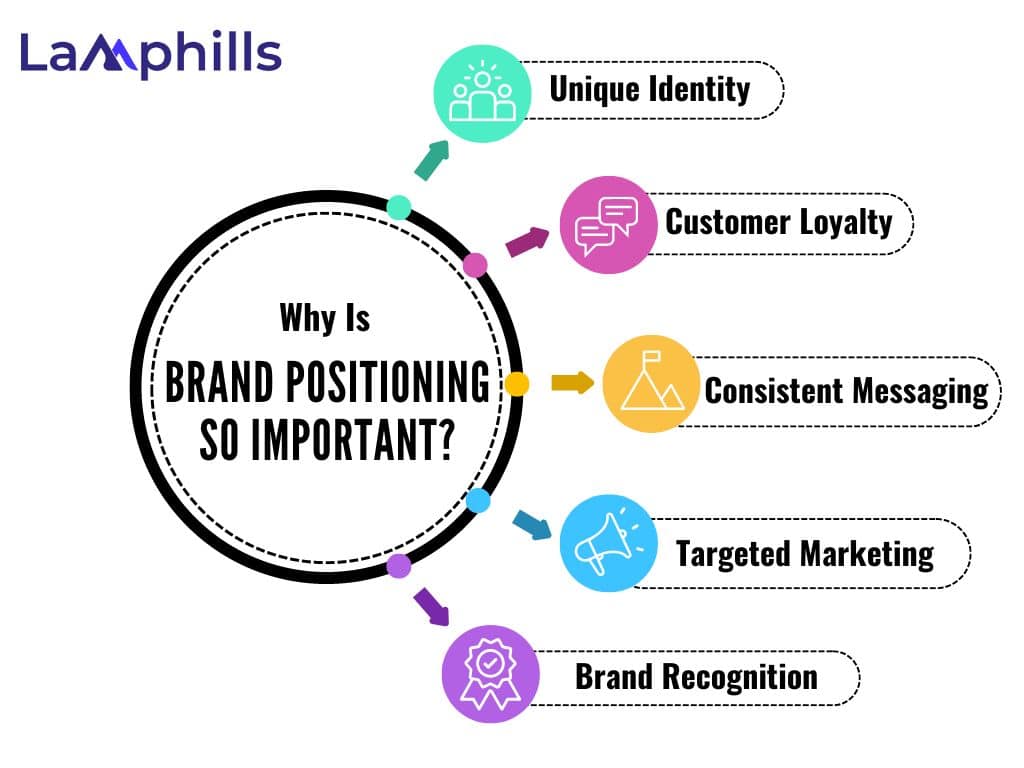Coca-Cola, Apple, and McDonald’s are well-known brand positioning examples. Looking at these examples of brand positioning can help, but it’s important to start with product development.
With my years of experience in marketing, sometimes it amazes me how some brands connect so well with people. It wasn’t just about what they sold; it was about the stories they told and the feelings they created. This led me to love brand positioning – the art of finding a special place in the market.
Making your brand stand out in a busy market means showing how it’s different from others. This is called brand positioning, and it’s an important part of your marketing plan and brand identity. Over the years, I’ve looked at many brands, learning from both their wins and mistakes. In this article, I will be sharing 15 famous brand positioning examples from around the world that have inspired me, along with some tips to help you create your strategy.
Key Points
- Brand positioning helps in creating a distinct identity for a brand, setting it apart from competitors. For example, Patagonia’s focus on eco-friendly products appeals to environmentally conscious consumers, helping the brand stand out in the outdoor clothing market.
- Effective brand positioning builds strong relationships with customers, fostering loyalty. Apple is a prime example, known for its high-quality and innovative products, which have cultivated a dedicated customer base that trusts and repeatedly chooses the brand.
- Consistency in messaging across all channels strengthens brand identity. Coca-Cola’s “Open Happiness” campaign is an example of how unified messaging across various platforms can make a brand easily recognizable and reinforce its identity.
- Understanding a brand’s position allows for more precise targeting of the right audience. Nike’s positioning as a brand for athletes enables it to tailor marketing efforts effectively, driving brand loyalty and sales by resonating with its target market.
- Strong brand positioning can enhance the perceived value of products or services, allowing brands to command higher prices. Rolex, positioned as a luxury watchmaker, leverages its reputation for precision and craftsmanship to justify higher prices, appealing to consumers seeking high-quality and status-symbol products.
What is Brand Positioning
Brand positioning is the process of creating a unique image and identity for a brand in the minds of consumers. It’s about making your brand stand out from competitors and ensuring that people think of your brand in a specific way. This involves highlighting what makes your brand different, better, or more desirable than others on the market.
Using brand positioning, you show why your brand is special and why customers should choose you over others. This depends on how your marketing plan shows your brand’s value and how it connects with customers. This is key to making your brand strong and noticeable.
First, you need to understand what your target audience likes, thinks, and does, as well as study your competitors and find opportunities in the market. In this case, market research will be of help. So, your ideal brand positioning should fit your brand, stand out from competitors, and also attract your audience.
Your brand positioning strategy should be a plan to share your brand message in different ways, like through your words, visuals, or how you interact with customers. The aim is to build a consistent, memorable, and unique identity for your brand.
Read Also: What Is Brand Integrity: Why Is It Important to a Company? 5 Key Reasons
Why Is Brand Positioning So Important?
With Brand positioning, a company sets itself apart from its competitors in the minds of its customers. It’s about defining what makes your brand unique and why customers should choose it over others. Here’s why it’s so important:

#1. Unique Identity
In a crowded marketplace, brand positioning helps you stand out. It highlights what makes your products or services unique. Without clear positioning, customers might not see why they should choose you over competitors. For example, if your brand is known for eco-friendly products, people who care about the environment will prefer your brand.
A perfect example is Patagonia. This brand stands out by focusing on being environmentally friendly. They make eco-friendly products, which sets them apart in the outdoor clothing market. People who care about the environment naturally choose Patagonia, creating a loyal customer base.
#2. Customer Loyalty
Effective brand positioning builds strong relationships with customers. When people understand and believe in your brand, they’re more likely to return. They feel connected to what you offer and trust your brand, leading to loyalty. For instance, if your brand is known for high-quality, luxury products, customers will trust that they are getting top-notch items every time.
In one case, I worked with a luxury brand known for its high-quality products. By consistently delivering on this promise, we cultivated a loyal customer base who trusted us for top-notch items every time.
Take for instance, Apple, which is one brand that is excellent at creating customer loyalty. Known for high-quality, innovative products, Apple has built a strong following. Customers trust Apple to deliver the best technology, leading to repeat purchases and long-term loyalty.
#3. Consistent Messaging
Brand positioning provides a clear framework for all your marketing efforts. It ensures that your messaging is consistent across all channels, whether it’s your website, social media, or advertisements. This consistency strengthens your brand’s identity and makes it easily recognizable.
An example is Coca-Cola. Whether through its “Open Happiness” campaign or holiday ads, Coca-Cola maintains a unified message across all platforms. This consistency strengthens their brand identity, making them one of the most recognizable brands in the world.
#4. Targeted Marketing

Image by rawpixel.com on Freepik
Knowing your brand’s position helps you target the right audience. You can tailor your marketing strategies to reach those who are most likely to be interested in your products or services. This focused approach is more efficient and effective.
For instance, Nike is great at targeted marketing. By positioning itself as a brand for athletes and active people, Nike tailors its marketing to appeal to this audience. This focused approach helps Nike effectively reach and engage its target market, driving brand loyalty and sales.
#5. Perceived Value
Strong brand positioning can elevate the perceived value of your products or services. When customers see your brand as unique and valuable, they’re often willing to pay more. This can lead to higher profit margins.
Rolex is an excellent example of perceived value. By positioning itself as a luxury watchmaker known for precision and craftsmanship, Rolex is seen as high value. Customers are willing to pay more for a Rolex watch, believing it represents the best in quality and status.
#6. Enhances Brand Recognition
Good brand positioning makes your brand more recognizable. When customers easily remember your brand, it can lead to more sales. Think of brands like Apple, which is known for being innovative and premium. This clear positioning makes it instantly recognizable.
#7. Competitive Advantage
A well-positioned brand enjoys a competitive edge. It’s easier to compete when you have a clear idea of what makes your brand better or different. This advantage can be crucial for long-term success.
An example is McDonald’s, due to its clear positioning as a provider of fast, affordable, and consistent food. The Golden Arches and the McDonald’s logo are instantly recognized worldwide, driving frequent customer visits and strong brand recall.
#8. Emotional Connection
Brand positioning often taps into the emotional aspects of buying. By aligning your brand with the values and aspirations of your customers, you create an emotional bond. This connection can be a powerful motivator for purchase decisions.
Tesla has a significant competitive advantage by positioning itself as a leader in electric vehicles. By focusing on innovation and sustainability, Tesla sets itself apart from traditional car manufacturers, gaining an edge in the growing electric vehicle market.
#9. Market Adaptation
With a clear brand position, you can better adapt to changes in the market. You’ll have a strong foundation that guides your decisions, helping you stay relevant and responsive to trends and shifts in consumer behavior.
Amazon is excellent at adapting to the market. By positioning itself as the go-to online marketplace, Amazon successfully adjusts to changes in consumer behavior and technology. This strong brand foundation helps it stay relevant and responsive to market trends.
#10. Supports Pricing Strategies
Brand positioning affects how customers see the value of your products. A premium brand can charge higher prices because customers believe they are getting better quality. A brand that is positioned as affordable will attract customers looking for good deals.
For instance, Starbucks uses its brand positioning to support its pricing strategies. Positioned as a premium coffee brand, Starbucks justifies higher prices by emphasizing quality and experience. Customers are willing to pay more for the perceived better value of Starbucks products.
#11. Aligns Business Decisions
A strong brand position helps guide all business decisions. From product development to customer service, every decision can be made with your brand’s position in mind. For example, if your brand is customer-focused, you’ll prioritize excellent customer service.
Zappos aligns all business decisions with its customer-focused brand position. Known for excellent customer service, Zappos prioritizes customer satisfaction in every aspect of its operations. This alignment strengthens its brand identity and reputation for outstanding service.
Brand positioning is crucial as it shapes customer perception, builds loyalty, guides marketing, enhances recognition, and supports pricing strategies. Companies like Patagonia, Apple, and Tesla have successfully used brand positioning to stand out in their markets. By clearly defining and communicating their unique positions, these brands have achieved long-term success and differentiation.
Here are some brand positioning examples of well-known companies from around the world that have inspired me, along with some tips to help you create your strategy.
15 Famous Brand Positioning Examples to Inspire Your Brand Strategy
Read the famous brand positioning examples below, as each offers key insights on how to set your brand apart from competitors:
#1. Apple: Innovation at the Core

Image by Medium.
I remember buying my first iPhone and feeling like I was holding a piece of tomorrow. Apple’s branding highlights sleek design and user-friendly technology, setting a high standard for tech brands.
They target people who want the best technology and are willing to pay more for a premium experience. Apple presents itself as a brand that stands for creativity, simplicity, and elegance.
Branding Tip: Figure out what makes your brand special. What can you offer that others can’t? Focus on this unique strength in all your branding efforts. For example, if your product is the most eco-friendly, highlight that in your messaging to stand out from competitors.
#2. Nike: Empowerment through Sports

Image by The New York Times
Growing up, I admired athletes and felt connected to Nike’s message of empowerment. Their simple, consistent message is very powerful. Nike is a popular brand known for its athletic shoes, clothing, and equipment.
The brand positioning of Nike is all about inspiration and innovation. Nike’s famous slogan, “Just Do It,” encourages people to push their limits and achieve their goals, no matter the challenges. This message resonates with athletes and fitness enthusiasts who are determined to improve and succeed. By associating its products with top athletes and motivational messages, Nike has positioned itself as a leader in the sports industry, inspiring people to believe in themselves and their abilities.
Branding Tip: When creating your brand positioning strategy, make sure your message is simple and clear. Think about what you want your customers to feel and believe when they see your brand. Just like Nike’s “Just Do It” slogan, your message should be easy to understand and should connect with your audience on an emotional level. This helps build a strong, memorable brand that people trust and admire.
#3. Coca-Cola: Happiness in a Bottle

Image by Behance
Every time I see their Christmas ads, I think of family gatherings and celebrations. Coca-Cola is a well-known brand that has positioned itself as a drink that brings joy and refreshment. They focus on creating a sense of happiness and togetherness, using slogans like “Open Happiness” and “Taste the Feeling.”
When you think of Coca-Cola, you might imagine sharing a drink with friends at a party or enjoying it on a hot day. This is because Coca-Cola has built a strong brand image around these positive and enjoyable moments. In summary, Coca-Cola is all about joy and togetherness, which makes it a timeless choice for many.
Branding Tip: Start by defining what makes your product or service unique. Think about what special benefits or experiences you offer that others don’t. For example, if you are selling handmade jewelry, your unique value might be the personal touch and craftsmanship that goes into each piece. Highlight these unique aspects in your marketing to set your brand apart and attract customers who appreciate what you uniquely offer.
#4. Tesla: Revolutionizing Transportation
This brand is about sustainability and advanced technology. My first test drive in a Tesla amazed me with its blend of innovation and eco-friendliness. Tesla’s branding appeals to environmentally conscious consumers by presenting itself as the future of transportation.
Tesla’s brand positioning is clear, they are the leader in electric vehicles, offering high-tech, eco-friendly, and luxury cars. They focus on innovation, sustainability, and cutting-edge technology. By emphasizing these qualities, Tesla stands out as a premium and forward-thinking brand in the auto industry.
Branding Tip: Think about what makes your product unique and why it matters to your customers. Identify the key features and benefits that set you apart and focus on those in all your marketing efforts. This way, you can communicate your brand’s unique value to your audience.
#5. Starbucks: The Third Place
Starbucks is more than just a coffee shop; it’s a “third place” between home and work. I know a friend who usually spends many hours in Starbucks cafes, enjoying the atmosphere as much as the coffee. Their branding creates a sense of community and belonging.
Their brand positioning focuses on creating a unique coffee experience that goes beyond just a cup of coffee. When you think of Starbucks, you think of a comfortable place to relax, work, or meet friends, where you can enjoy a wide variety of delicious drinks and snacks. This is how Starbucks sets itself apart from other coffee shops.
Branding Tip: To create a strong brand positioning strategy for your business, focus on what makes you unique. Think about what special experience or value you offer that your competitors don’t. This could be anything from exceptional customer service to a unique product or a memorable shopping experience. Make sure your customers know and feel this difference every time they interact with your brand.
#6. Amazon: Customer-Centric Convenience

Image by Forbes
This brand focuses on convenience and customer satisfaction. My first Prime delivery was a game-changer, showing me the value of speed and reliability. Amazon’s branding emphasizes easy shopping and fast delivery.
Amazon is one of the world’s largest and most well-known companies. Its brand positioning can be summed up as “Earth’s most customer-centric company.” This means Amazon focuses on providing the best possible experience for its customers. They do this by offering a vast selection of products, competitive prices, and fast delivery.
Amazon’s success is built on:
- Convenience: Customers can find almost anything they need on Amazon, making it a one-stop-shop.
- Customer Service: Amazon prioritizes customer satisfaction with easy returns and 24/7 support.
- Innovation: They constantly introduce new services, like Prime for fast shipping and streaming, and Alexa for smart home technology.
Branding Tip: Focus on Your Unique Strength. Identify what makes your brand unique. Think about:
- What do you offer that your competitors don’t?
- How can you solve your customers’ problems better than anyone else?
Focus on these strengths and communicate them clearly to your customers. This will help you stand out in the market and build a loyal customer base.
#7. Google: Information at Your Fingertips
The first time I used Google, I was amazed at how quickly I could find answers. Their branding focuses on simplicity and accessibility.
Google is known for being the best search engine on the internet. When you need to find information quickly, you “Google it.” This simple phrase shows how well Google has positioned itself in our daily lives. Google’s brand positioning is about being reliable, fast, and the go-to place for finding information.
Branding Tip: When creating your brand positioning strategy, focus on what makes your brand unique and valuable to your customers. Think about what you want people to think of when they hear your brand name, and make sure everything you do reflects that image.
#8. Disney: Magic and Wonder

Image by Wikipedia
This brand is about creating magical experiences. In my niece’s exact words, “visiting Disneyland as a child felt like stepping into a world of wonder.” Disney is a world-renowned entertainment company known for its magical experiences and beloved characters.
Their brand positioning centers around creating happiness and unforgettable memories for families and people of all ages. Disney’s parks, movies, and products are all designed to transport people into a world of wonder and imagination.
Branding Tip: Define Your Unique Value, and identify what makes your brand special. Ask yourself: What unique value does my brand offer? Focus on what sets you apart from competitors and how you can consistently deliver that unique experience to your audience. Just like Disney focuses on magic and happiness, your brand should have a clear and distinctive message that resonates with your customers.
#9. BMW: The Ultimate Driving Machine
Driving a BMW feels like handling a finely tuned machine. Their branding highlights superior engineering and driving pleasure.
BMW is a well-known car brand that stands for luxury, performance, and driving pleasure. When people think of BMW, they often think of high-quality, stylish cars that are fun to drive. This image didn’t happen by accident. BMW has carefully positioned itself as a premium car brand by consistently delivering vehicles with top-notch engineering, sleek designs, and advanced technology.
Branding Tip: To create a strong brand positioning strategy, clearly define what makes your product unique and why it matters to your customers. Focus on the key benefits and emotions you want your brand to be associated with, just like BMW focuses on luxury and performance. Consistently communicate this message in all your marketing efforts to build a strong and recognizable brand.
#10. IKEA: Stylish Affordability
IKEA is a popular furniture store known for its affordable and stylish products. They offer a wide range of items, from simple shelves to complete room sets, all designed to be both functional and attractive. IKEA’s brand positioning is all about providing modern, high-quality furniture at prices that most people can afford. They also emphasize convenience, with their flat-pack designs that are easy to transport and assemble at home.
Branding Tip: To create a strong brand positioning strategy like IKEA, start by understanding your audience. Know what they need, what they like, and what problems they want to solve. By focusing on these aspects, you can design your products or services to meet their specific needs, making your brand more appealing and relevant to them.
#11. Patagonia: Environmental Stewardship
Buying Patagonia gear feels like supporting a cause I believe in, protecting the planet. Patagonia is a company known for selling outdoor clothing and gear. They stand out because they care deeply about the environment. Their brand message is all about sustainability and protecting nature.
This means they use eco-friendly materials, support environmental causes, and encourage customers to recycle their old gear. Patagonia’s brand positioning makes people think of it as a leader in eco-friendly and high-quality outdoor products.
Branding Tip: Start by defining your core values. What does your brand stand for? What makes it unique? Patagonia’s success shows how focusing on strong, clear values like sustainability can help you stand out in the market. Make sure your values are reflected in everything you do, from your products to your marketing messages.
#12. Harley-Davidson: Freedom and Individuality
This is a well-known motorcycle brand that has positioned itself as more than just a company that makes bikes. They represent a lifestyle of freedom, adventure, and rebellion. When people think of Harley-Davidson, they imagine strong, rugged individuals enjoying the open road. This powerful image helps Harley-Davidson stand out from other motorcycle brands.
Branding Tip: To create strong brand positioning like Harley-Davidson, identify what makes your brand unique. Think about the feelings and experiences you want your customers to associate with your brand. Focus on a clear message that captures your brand’s essence and consistently communicate it in everything you do. This will help your brand stand out and connect with your audience on a deeper level.
#13. Red Bull: Adventure and Energy

Image by Steel City Beverage
Watching extreme sports sponsored by Red Bull made me think of the brand as exciting and full of adrenaline. Red Bull is known for its energy drinks, but what really makes it stand out is how it positions itself in the market. Red Bull isn’t just selling a drink; it’s selling a lifestyle of adventure, excitement, and extreme sports.
Their slogan, “Red Bull gives you wings,” captures this perfectly. They sponsor daring events like air races, cliff diving, and extreme sports, which appeal to young, active people who crave adventure. This strong, clear image sets Red Bull apart from other drinks.
Branding Tip: Find Your Unique Angle—focus on what makes your brand unique. Think about:
- Your Audience: Who are they? What do they like?
- Your Benefits: What unique benefits does your product or service offer?
- Your Values: What does your brand stand for?
By combining these elements, you can create a distinct image that sets your brand apart from the competition, just like Red Bull has done.
#14. Tiffany & Co.: Timeless Elegance
Receiving a Tiffany piece feels like owning a timeless treasure. Their branding appeals to high-end consumers by highlighting sophistication and exclusivity.
Tiffany & Co. is a famous jewelry brand known for its luxury and high-quality products. When people think of Tiffany & Co., they often imagine beautiful diamonds, elegant designs, and that iconic blue box. This brand positioning means Tiffany & Co. has created a specific image in people’s minds that represents sophistication, luxury, and timeless beauty.
Branding Tip: Be Unique and Consistent. Focus on what makes your brand unique and consistently communicate that uniqueness in everything you do. Whether it’s your logo, the colors you use, or the message you share, make sure it always reflects the special qualities of your brand. This helps people remember and recognize your brand easily.
#15. Lego: Creativity and Fun
Lego’s brand is about fostering creativity and fun. Building with Lego bricks feels like an endless adventure of imagination. Their branding appeals to both children and adults by focusing on creativity, playfulness, and learning.
They position themselves as a toy company that offers more than just plastic bricks. Lego is all about creativity, imagination, and fun. They market their toys as a way for children (and adults) to build anything they can dream up, which makes them stand out from other toy companies. By focusing on these values, Lego has become a beloved brand around the world.
Branding Tip: Identify a key benefit or quality that sets you apart from competitors. Focus on this unique aspect of your marketing and communication to create a strong, memorable brand identity. For example, if your product is eco-friendly, highlight how it helps the environment. This will help your brand stand out and attract customers who care about that quality.
In summary, effective brand positioning is about defining what makes your product unique. Brands like Lego (creativity), Nike (performance), and Apple (innovation) clearly highlight their unique qualities. By focusing on what sets you apart, you can build a memorable brand that attracts loyal customers.
Now, follow these steps below to create a strategy that positions your brand effectively.
Steps to Effective Brand Positioning Strategy
Creating a brand positioning strategy means deciding how you want people to see your brand compared to others. Here are the main steps to creating an effective brand positioning strategy:
See the checklist below for effective steps for brand positioning.
#1. Know Your Audience
Identify who your ideal customers are. Understand their age, interests, behaviors, and needs. This helps tailor your brand message to resonate with them.
#2. Research the Market
Study the market to see what trends are popular and what customers need. Look at your competitors to find out how they position themselves and spot any gaps or opportunities.
#3. Define Your Brand’s Core
Clarify what your brand stands for, including its values, mission, and vision. Make sure this resonates with your audience.
#4. Define Your Unique Value Proposition (UVP)
Determine what makes your brand unique and why customers should choose you over others. Clearly state the special benefits and features that your brand offers, that competitors do not.
#5. Create a Brand Promise
This is a clear and compelling statement that communicates the main benefit your brand offers. This promise should align with your UVP and be relevant to your target audience.
Make a clear promise to your customers about what they can expect from your products or services. Ensure this promise is consistently kept.
#6. Choose a Positioning Strategy
Select a positioning strategy that aligns with your brand promise. Some common strategies include:
- Cost Leadership: Position your brand as offering the best value for money.
- Differentiation: Highlight the unique features and benefits of your products or services.
- Niche Focus: Cater to a specific, smaller segment of the market with specialized needs.
#7. Create a Brand Personality
Develop a personality for your brand that reflects human traits. This should align with your brand’s core and appeal to your audience.
#8. Messaging and Communication
Develop clear and consistent messages that resonate with your audience. This includes your slogan, brand story, and main messages.
In addition, make sure all your marketing materials, including advertisements, social media, and packaging, consistently communicate your brand message and promise.
#9. Visual Identity
Create a visual look for your brand that supports your positioning. This includes your logo, colors, fonts, and overall design, that show your brand’s personality and promise.
#10. Customer Experience
Ensure every interaction with your customers matches your brand positioning. This includes product quality, customer service, and user experience.
Also, focus on how your product or service improves the lives of your customers rather than just listing features.
#11. Consistent Delivery
Consistency is key. Make sure all marketing, communications, and customer interactions consistently reflect your brand positioning.
#12. Monitoring and Adaptation
Regularly check how your brand is perceived and gather feedback. Be ready to adjust your strategy to stay relevant and competitive.
By following these strategies, you can create a strong, clear, and appealing brand position that attracts and retains customers.
Wrap Up
In conclusion, your brand positioning strategy is your plan to make people see your brand in a clear and specific way. It means deciding the main features, benefits, and values that define your brand and what you offer.
The examples cited in this article show that successful brand positioning goes beyond just selling products, it’s about creating an emotional connection and telling a compelling story. By understanding what makes these brands stand out, you can find inspiration for your brand strategy. Remember, the key to effective branding is authenticity. Stay true to your values and let them shine through in every aspect of your marketing.
Bonus Answers to FAQs.
What is brand positioning in PR?
Brand positioning is how a brand is seen by people. It involves making sure consumers understand what the brand is about, how it stands out in the market, and how it compares to competitors. It’s about shaping the overall public image of the brand.
What does a branding agency do?
Branding agencies help businesses create a unique look and feel for their products and services. They help you figure out who you are, what your story is, what values you have, and who your best customers are.
What are the 4 components of brand positioning?
The four basic parts of a brand positioning statement are:
1. Target audience (who you are trying to reach)
2. Category (the market area you belong to)
3. Differentiation (how you are different from competitors)
4. Payoff (the benefits you offer)
What are the three rules of brand positioning?
Three Rules of Brand Positioning
No matter which brand positioning strategy you choose, remember these three rules: clarity, consistency, and uniqueness. These rules guide your brand positioning efforts.
Related Articles
What Is Brand Integrity: Why Is It Important to a Company? 5 Key Reasons
Top Rebranding Strategies That Sparks Massive Business Growth
10 Social Responsibility Examples That Will Restore Your Faith in Humanity






